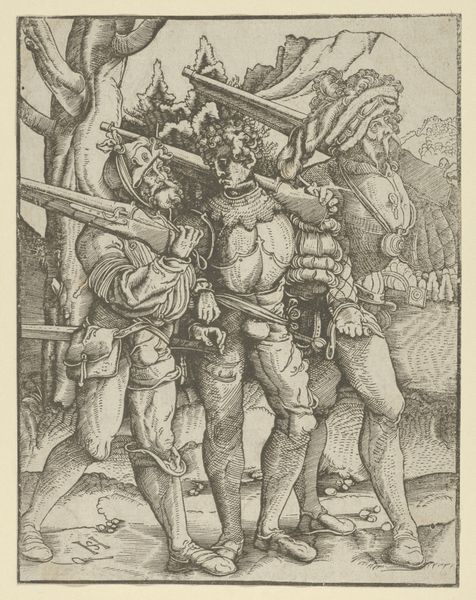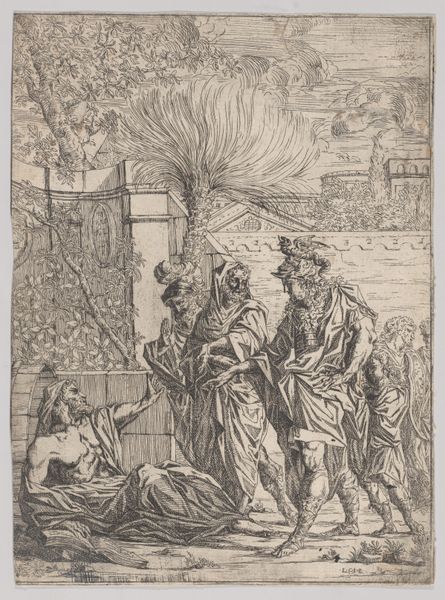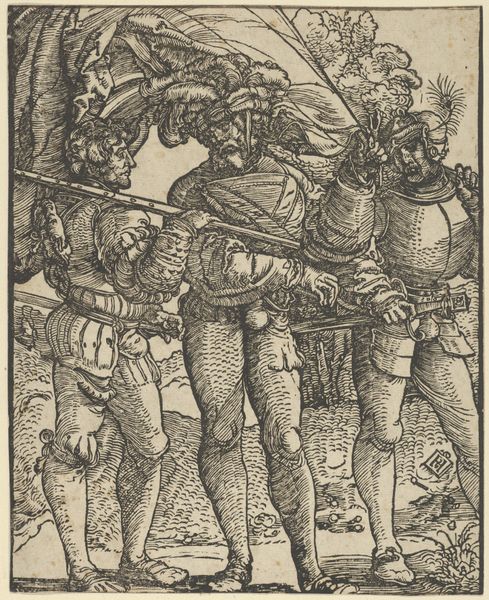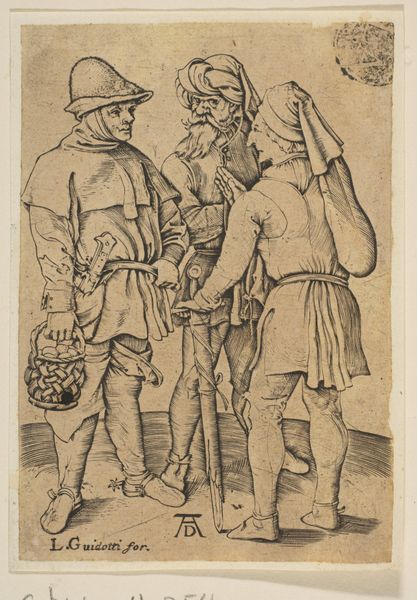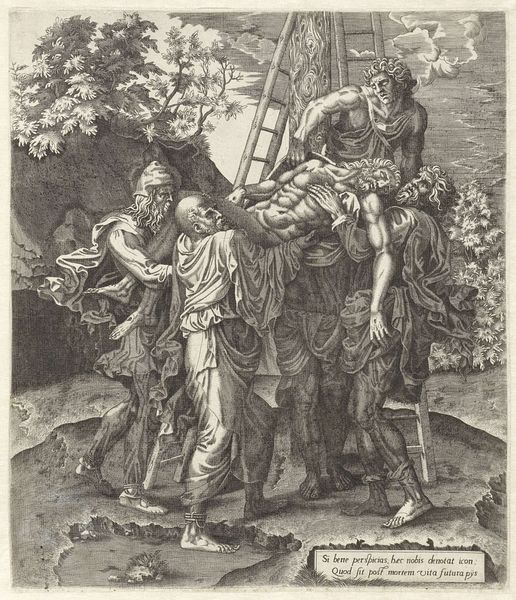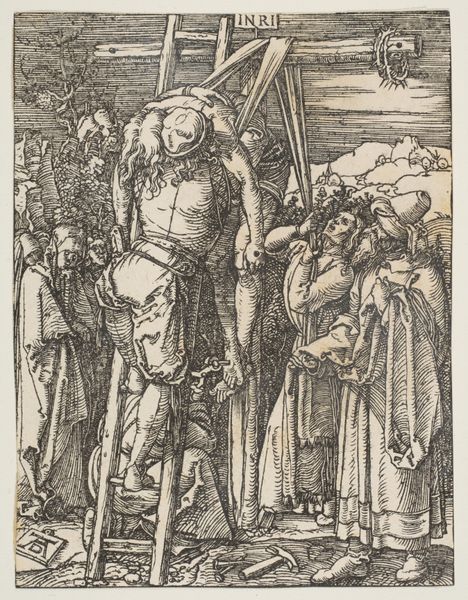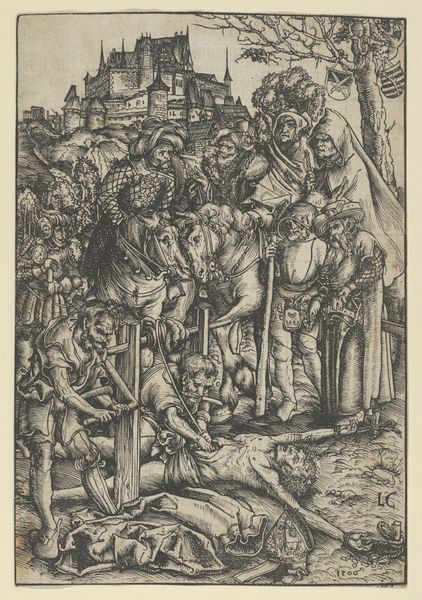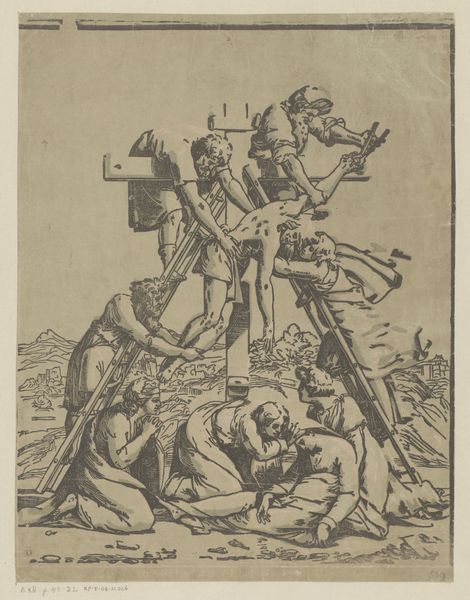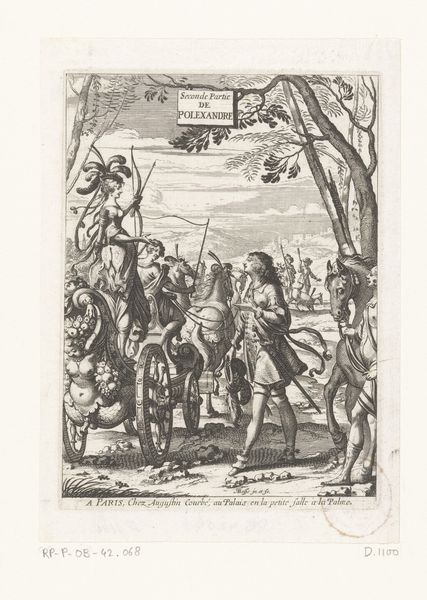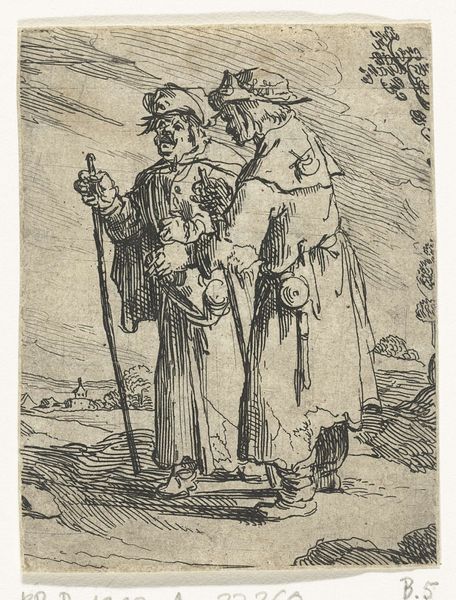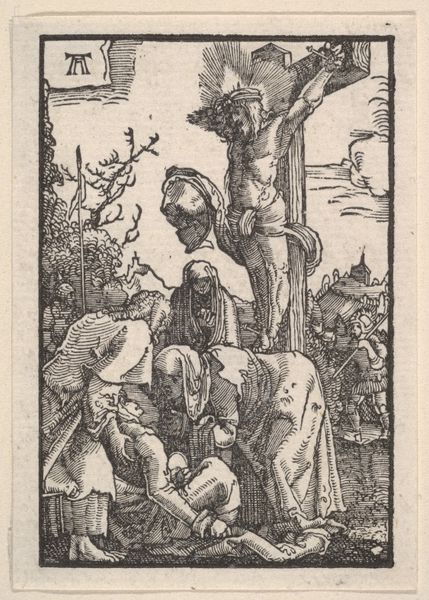
Half-clothed man with a pigtail at the back of his head; he supports himself by having his arms around the necks of two other men; also with pigtails at the backs of their heads 1582
0:00
0:00
drawing, print, woodcut, engraving
#
portrait
#
drawing
# print
#
figuration
#
11_renaissance
#
woodcut
#
history-painting
#
northern-renaissance
#
engraving
Dimensions: 209 mm (height) x 148 mm (width) (bladmaal)
Editor: This woodcut, “Half-clothed man with a pigtail at the back of his head; he supports himself by having his arms around the necks of two other men; also with pigtails at the backs of their heads,” was created in 1582 by Melchior Lorck. It’s a striking image of male vulnerability and dependence. What do you make of the power dynamics at play? Curator: It’s fascinating how Lorck utilizes the medium of print to circulate potent imagery laden with socio-political undertones. This piece begs us to consider: who are these men? What is the nature of their relationship? Are we looking at an allegory of brotherhood, or perhaps something more fraught? Editor: The pigtails feel particularly loaded—is that a cultural marker? Curator: Absolutely. Examining their attire and hairstyles through a contemporary lens allows us to consider how cultural markers are used to signal identity, but also how easily those signals can be weaponized or misconstrued by dominant narratives. Consider also the male body presented not as a symbol of power but of reliance. How does that challenge contemporary assumptions about gender roles? Editor: It does invert expectations, particularly from that historical period. Were depictions of male fragility common? Curator: Not typically within mainstream artistic production. Lorck was working during a period of immense political and religious upheaval. He moves the viewers to examine the very foundations of societal norms and biases, using art as a powerful tool to initiate crucial discussions regarding identity and acceptance. What would it mean for a viewer in 1582 to be faced with an image that so radically deviates from established visual tropes? Editor: I hadn't thought of it that way. So this artwork functions almost like a historical intervention. Curator: Precisely! And it invites us to consider how we might, even today, perpetuate similar power dynamics through our own ingrained assumptions about gender, race, and other markers of identity. Editor: This was incredibly insightful. I now have a much richer understanding of how this image challenges conventions. Curator: And hopefully inspires you to question them as well. Art is at its best when it provokes critical thought.
Comments
No comments
Be the first to comment and join the conversation on the ultimate creative platform.
